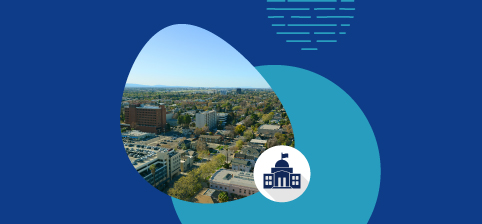Thousands of Space Force and Air Force personnel and industry experts convened to discuss the most current and significant threats confronting global networks and national defense at the 2023 Department of the Air Force Information Technology and Cyberpower Education & Training (DAFITC) Event. Throughout the many educational sessions, thought leaders presented a myriad of topics such as artificial intelligence (AI), DevSecOps solutions and cybersecurity strategies to collaborate on the advancement of public safety.
Leveraging Generative AI in the DoD
At the event, experts outlined three distinct use cases for simplified generative artificial intelligence in military training.
- Text to Text: This type of generative AI takes inputted text and outputs written content in a different format. Text to Text is associated with tasks such as content creation, summarization, evaluation, prediction and coding.
- Text to Audio: Text to Audio AI can enhance accessibility and inclusion by creating audio content from written materials to support elearning and education and facilitate language translation.
- Text to Video: Text to Video AI is primarily geared towards generating video content from a script to aid the military with language learning and training initiatives.
Dr. Lynne Graves, representative of the Department of the Air Force Chief Data and Artificial Intelligence Office (CDAO), provided attendees with a brief timeline of how the USAF will fully adopt artificial intelligence. The overarching aim for AI integration is to make it an integral part of everyday training, exercises and operations within the Department of Defense (DoD).
- In FY23, the DoD is focusing on pipeline assessment. Using red teaming where ethical hackers run simulations to identify weaknesses in the system, internal military personnel target improvement of their infrastructure and mitigation of the vulnerabilities in the different stages of the pipeline.
- In FY24, the emphasis will be on the Red Force Migration policy, which involves developing, funding and scaling the necessary strategies.
- In FY25, the goal is for the department to become AI-ready. This entails preparing for AI adoption at all agency levels, establishing a standard model card that explains context for the model’s intended use and other important information, creating a comprehensive repository of data and implementing tools for extensive testing, evaluation and verification.
 USSF Supra Coders Utilize DevSecOps for Innovation
USSF Supra Coders Utilize DevSecOps for Innovation
The current operations of United States Space Force (USSF) Supra Coders involve a range of activities that combine modeling, simulation and expertise in replicating threats. These operations are conducted globally, and currently include orbit-related activities, replication of DA ASAT (Direct Ascent Anti-Satellite) capabilities and the reproduction of adversarial Space Domain Awareness (SDA).
The USSF Supra Coders have encountered limitations with software solutions, including restrictions tied to standalone systems, licensing structures with associated costs and limited adaptability to meet the specific needs of aggressors and USSF requirements. DevSecOps presents a multifaceted strategy for mitigating the identified capability gaps noted by the USSF Supra Coders. It can help create more effective and efficient software solutions through seamless integration of security protocols, streamlining system integration processes, optimizing costs and enhancing customizability.
Cybersecurity Within the Space Force
Cybersecurity is a shared responsibility across the DoD but is especially relevant for the U.S. Space Force. As a relatively newly emerging branch of the military, the Space Force is still developing its cyber strategies. Due to its completely virtual link to its capabilities, the USSF must prioritize secure practices from the outset and make informed decisions to protect its networks and data.
Currently, the Space Force is engaged in the initial phases of pre-mission analysis for its cyber component which serves as a critical element for establishing and maintaining infrastructure through the integration of command and control (C2). These cyber capabilities encounter a series of complex challenges, which necessitate a multifaceted approach including the following solutions:
- Enforcing Consistent Cybersecurity Compliance
- Developing Secure Methods to Safely Retire Old Technology
- Enhancing Cryptography Visibility
- Understanding Security Certificate Complexity
- Identifying Vulnerabilities and Mitigating Unknown Cyber Risks
While the Space Force faces a uniquely heightened imperative to bolster its cybersecurity capabilities with its inherent reliance on information technology and networks in the space domain, the entire community must collaborate effectively to achieve military leaders’ targeted cybersecurity capabilities by the goal in 2027.
The integration of generative AI in military training, innovations through DevSecOps by the USSF Supra Coders and cybersecurity initiatives of the Space Force collectively highlight the evolving landscape of advanced technologies within the Department of Defense. Technology providers can come alongside the military to support these efforts with new solutions that enhance the DoD’s capabilities and security.
Visit Carahsoft’s Department of Defense market and DevSecOps vertical solutions portfolios to learn more about DAFITC 2023 and how Carahsoft can support your organization in these critical areas.
*The information contained in this blog has been written based off the thought-leadership discussions presented by speakers at DAFITC 2023.*






